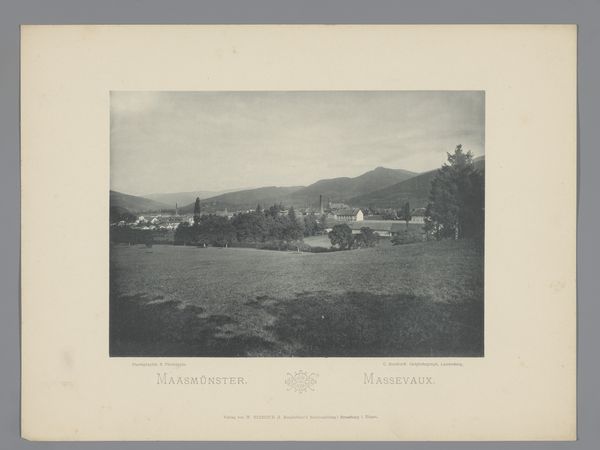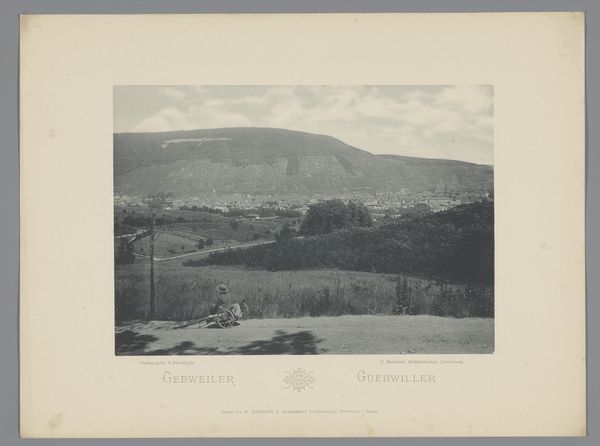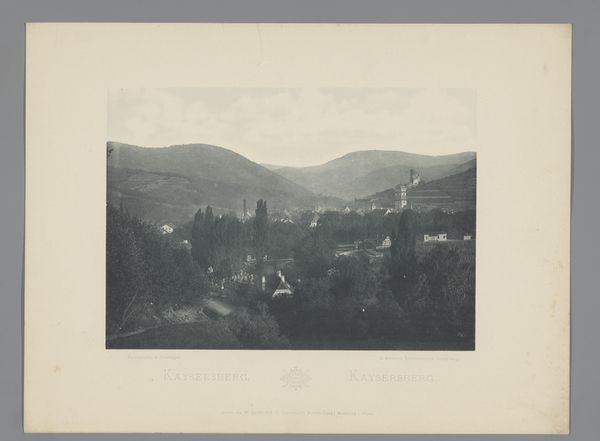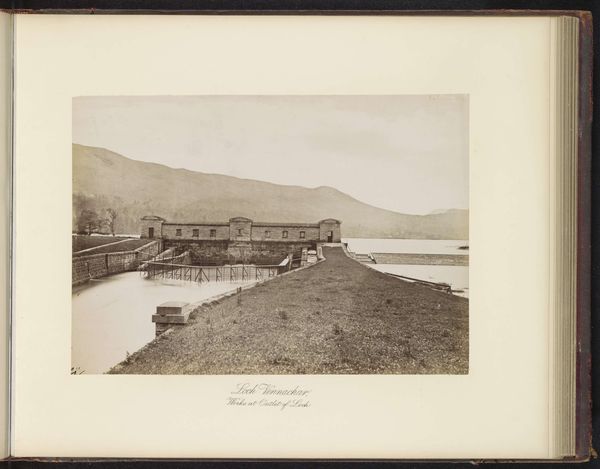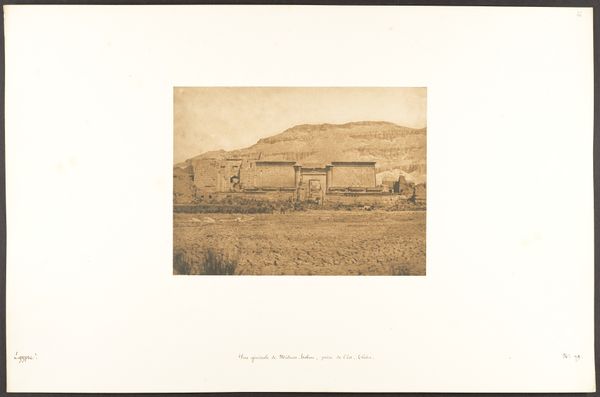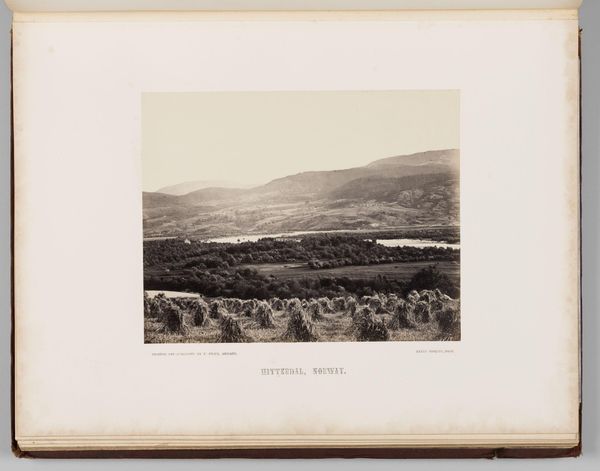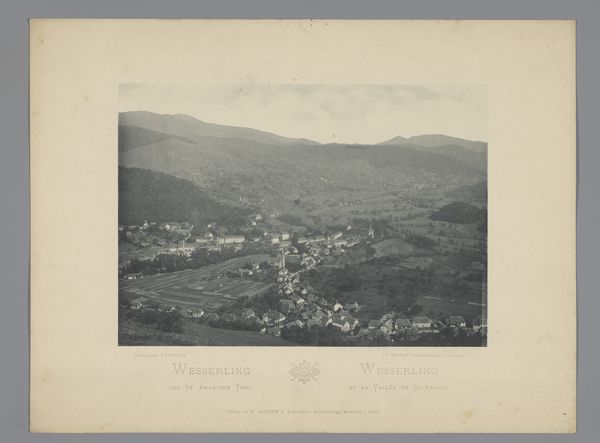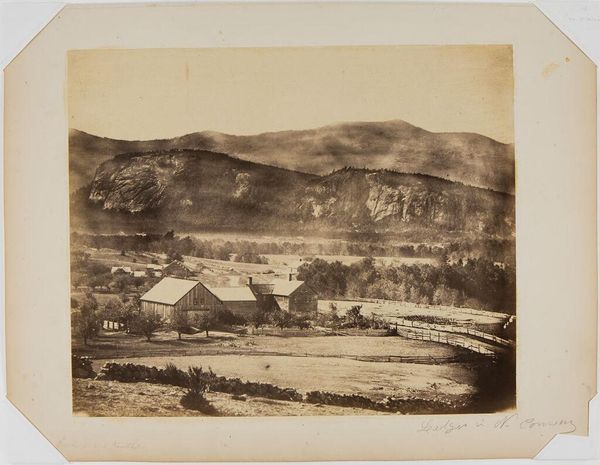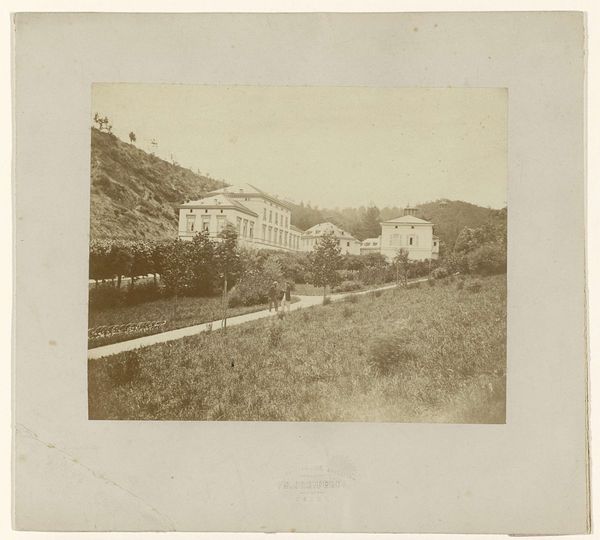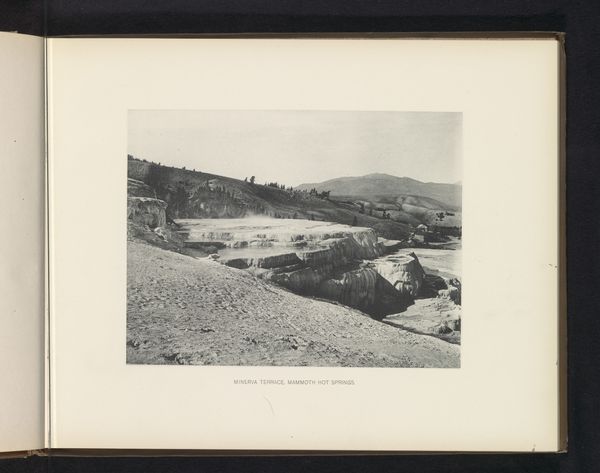
photography
#
pictorialism
#
landscape
#
photography
#
mountain
Dimensions: height 153 mm, width 216 mm
Copyright: Rijks Museum: Open Domain
Curator: Let's turn our attention to this photograph, "Gezicht op een hotel op de Grand Ballon," attributed to Charles Bernhoeft and created sometime before 1894. Editor: There's a quiet stillness to it. It’s dominated by the building, solid but dwarfed by the vast, soft landscape receding into the hazy distance. A somber mood, wouldn't you say? Curator: It's interesting you say that. Bernhoeft was part of the Pictorialist movement, which sought to elevate photography to the status of fine art. The soft focus and careful composition suggest a deliberate artistic choice rather than just documentation. He's carefully constructed a vision of landscape as experienced and remembered, perhaps not an entirely objective representation. Editor: Absolutely. The composition and technique—the graininess, almost mimicking an etching—makes you consider how the emerging tourism industry intersected with notions of leisure and escape, specifically at the site of mountain landscapes at the turn of the century. Hotels, and how they catered to a certain socio-economic group is key here, and is something that perhaps we should look into in further detail, as the implications are enormous! Curator: Good point. Looking through the lens of class dynamics and photographic technology, the image seems a complex interplay of representation and ideology. The romantic ideal of retreating into nature, even though, as you indicate, such experiences and venues weren’t open to all social classes. Editor: And considering the history of photography itself—its association with power and control—we can see this hotel image less as an innocent depiction of leisure and more as a marker of societal hierarchies embedded in the landscape. What do you make of the high vantage point? Curator: From an art historical perspective, this elevated perspective contributes to the sublime feeling that was popular with the Romanticism. It asserts humanity’s, or at least some of humanity's, position atop nature’s grandeur, the very place to control it. Editor: This is important as it questions how visual media not only document social phenomena, but reinforce and legitimize certain societal frameworks, or perhaps the position of a certain type of holiday maker? It challenges the viewers, even those generations later, to be far more reflective on art consumption! Curator: Precisely. Seeing this landscape, not as a straightforward portrayal, but as a reflection of power and cultural ideals helps me to further consider how imagery of this time plays an active role in constructing history itself. Editor: I concur entirely. Viewing art like this prompts us to re-evaluate the assumptions we make and consider how photographs, especially landscapes, helped shape society.
Comments
No comments
Be the first to comment and join the conversation on the ultimate creative platform.
